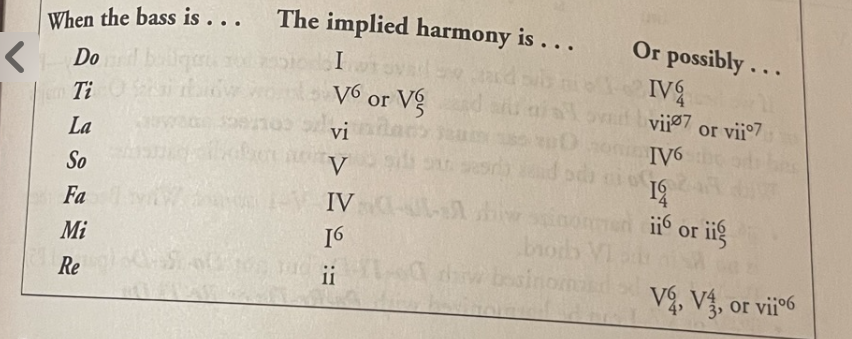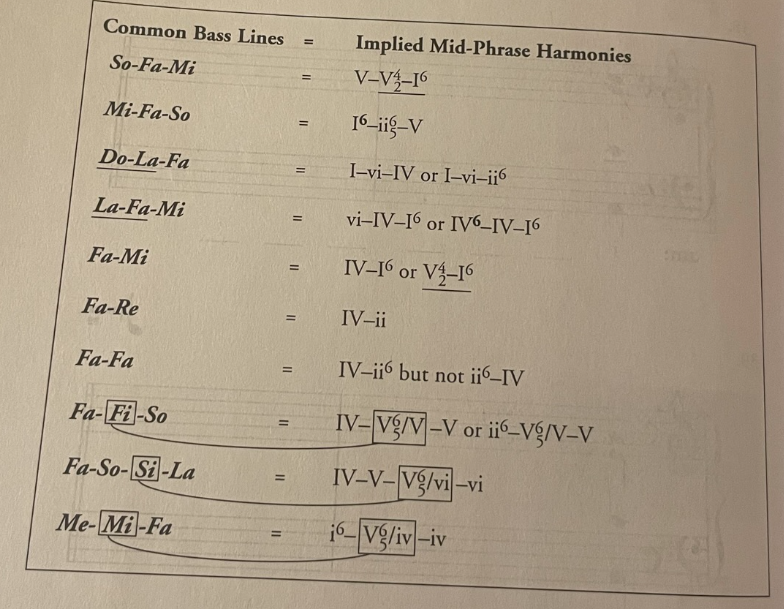Chapter 15 - Aural Skills 3: Harmonic Dictation
Skills Required for Successful Harmonic Dictation
Understanding the relationship of chords to the tonal center
Discriminating between chord qualities and recognizing inversions
Recognizing familiar melodic patterns (linear movement) in the melody and bass and their placement
Recognizing and notating cadences
Understanding the norms of the common-practice style
Three harmonic areas or functions
- Tonic - I and vi
- Subdominant or Predominant - IV and ii or ii7
- Dominant - V or V7 and vii° or vii°7
Other harmonic truths:
- Root position chords are considered strong
- The supertonic and leading-tone chords are commonly found in first inversion
- The supertonic in first inversion is a strong subdominant harmony
Second inversion and sometimes first inversion harmonies are often used to prolong stronger harmonies. There are four basic ways to prolong a harmony:
- Passing harmonies
- Neighbor harmonies
- Arpeggiated harmonies
- Cadential harmonies

Harmonic progressions move from tonic to subdominant to dominant to tonic (T-S-D-T)

Dominant harmonies don’t move to subdominant
Chromatic chords prolong the harmony they lead to

Significant harmonic function changes usually occur on strong beats
When the bass line is conjunct, harmonies are generally being prolonged
When large skips or leaps occur in the bass it often signals a change of function
Connecting the Dots Between Hearing and Notating
- Understanding what commonly ends a phase
- Understand that only I, V, or vi can be the last chord
- Understand cadential patterns (bass and soprano)
- Listen for basic patterns in the bass line
- Be able to aurally identify cadences
- Understand what harmonies are implied from knowing the bass line
- Understanding what commonly begins a phrase
- Return to tonic
- Listen for basic patterns in the bass line
- Understanding what commonly occurs in the middle of a phase
- Common subdominant function
- Possible use of chromatic harmony
- Possible use of inverted chords
- Listen for common basic patterns in the bass line
Implied Harmonies

- This is a list of what harmonies are implied from knowing the bass line
Recognizing and Notating Cadences
Cadence - The way phrases end.
Most common bass line endings
- So-So-Do

- Fa-So-Do

With Fa-So-Do in the bass, these are the common melodic patterns:
- ii6-V7-I can harmonize with Re-Re-Do; IV-V-I can’t because there’s no Re in the IV chord.
- IV-V-I can be harmonized with Do-Ti-Do, but not Do-Re-Do.
- ii6-V or V7-I can be harmonized with Re-Re-Do or Re-Ti-Do.

Recognizing and Notating the Mid-Phase

- These are common progressions, implied harmonies, and other elements that might be featured in the middle.
- The middle section uses inversions if the bass is moving stepwise.